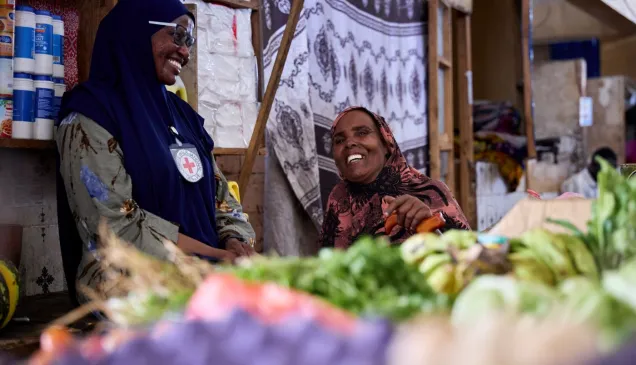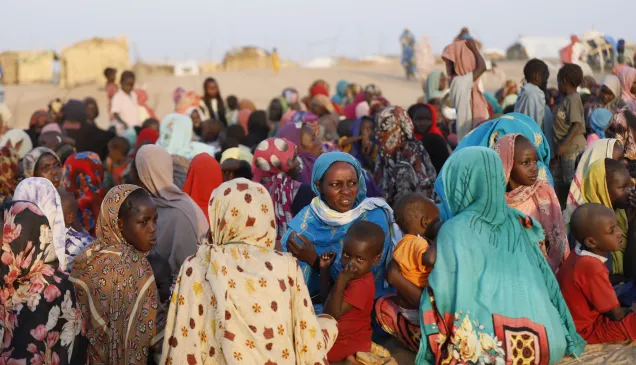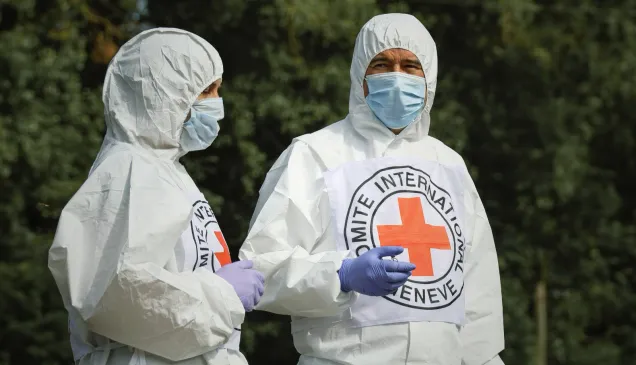“If your animals die, you die with them” – Somali herders defenceless against the climate crisis
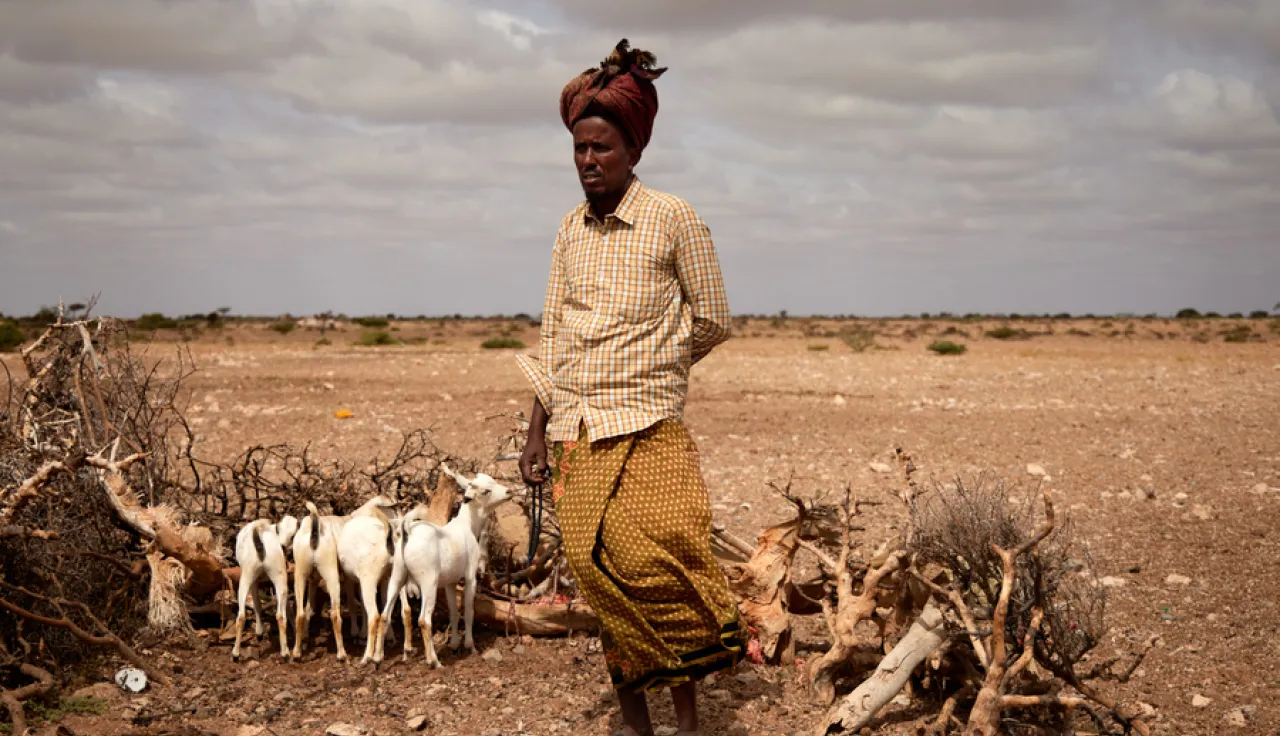
In our latest piece exploring the link between climate change and conflict, we focus on Somalia and a way of life under threat. With COP26 on the horizon in Glasgow, UK, communities enduring conflict must be high on the agenda.
Hundreds of camels jostle for position around the mouth of a small reservoir, their necks elongated as they drink water from a trough.
Unfazed by the commotion behind them, two herders sing while drawing up water for their animals.
“The camels are thirsty,” said Ahmed Mohamud, one of the herders. He has been travelling for days with five other herders in search of water and pasture.
Together, they form a ‘band of brothers’. They are armed with guns, ready to fend off any threats – be they human or animal.
The one thing they cannot defend against, however, is now the single biggest threat to their way of life – the climate crisis.
“There’s no food, the ground is dry,” said Mohamud.
The 38-year-old had 70 camels, but 50 died due to a lack of food.
The tale of dwindling herds is common in this part of northern Somalia.
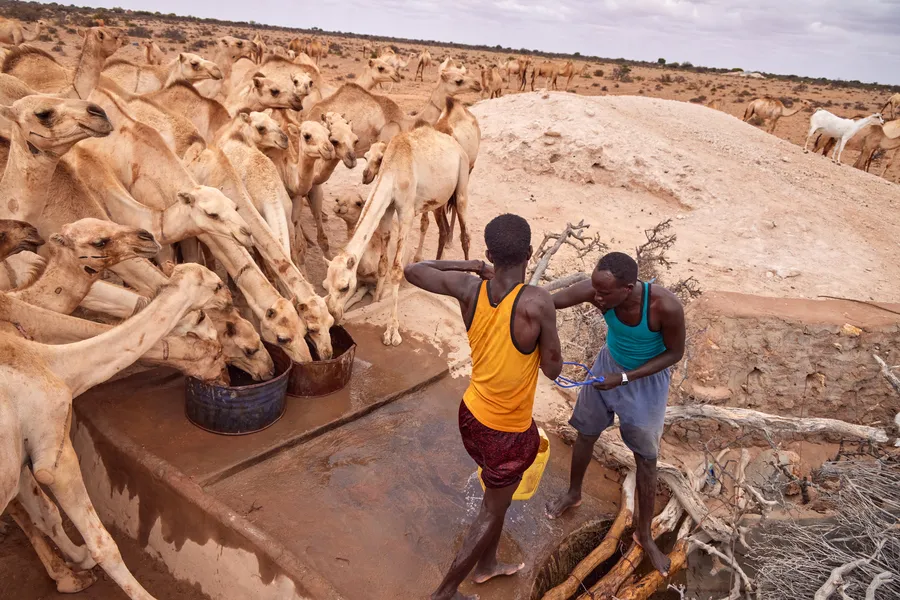
The land is parched and spotted with drought-withered scrub. Everything seems to blend together in various shades of light brown.
Mohamed Hassan Gure, another herder, lost the majority of his camels to a combination of drought, floods and the recent locust swarms that ate the pastures.
“The rural people have always depended on animals,” he said. “If they lose their animals there is nothing to depend on.
"If your animals die, you die with them. You can't survive without your animals.”
Repeated climate threats
Somalia is no stranger to climate extremes: droughts, flash floods, erratic rainfall, rising temperatures, cyclones, sandstorms, dust storms – Somalia experiences them all.
What has changed is the recurrent nature of such shocks. Between 2007 and 2016, Somalia experienced severe drought in six of those years.
In 2019, delayed rains resulted in another prolonged period of drought. This was followed by intense rainfall and flooding, leading to more than 370,000 people becoming displaced.
Desert locust swarms then caused catastrophic damage to crops and livelihoods last year.

In April this year, 80 per cent of the country experienced a moderate to severe drought (OCHA).
Ensuing heavy rains triggered flash floods in parts of the country, killing dozens and affecting tens of thousands.
The recurrent nature of climate shocks leaves little time for people to recover. Climate projections suggest worse is to come.
Mean annual temperatures are projected to increase by around three degrees across Somalia by the end of the century.
Projections suggest an annual increase in rainfall, but this will be less regular and more intense, leading to flooding and soil erosion.
In a country where 60 per cent of the population live in rural areas as nomadic or semi nomadic pastoralists, and agricultural activities account for 65 per cent of the GDP (World Bank), climate change poses a severe threat to people’s livelihoods and way of life, something that Mohamud is acutely aware of.
“If you lose your animals, you sign up as a refugee, that's what we say,” he said. “There are many people who lost their animals and signed up as refugees.”
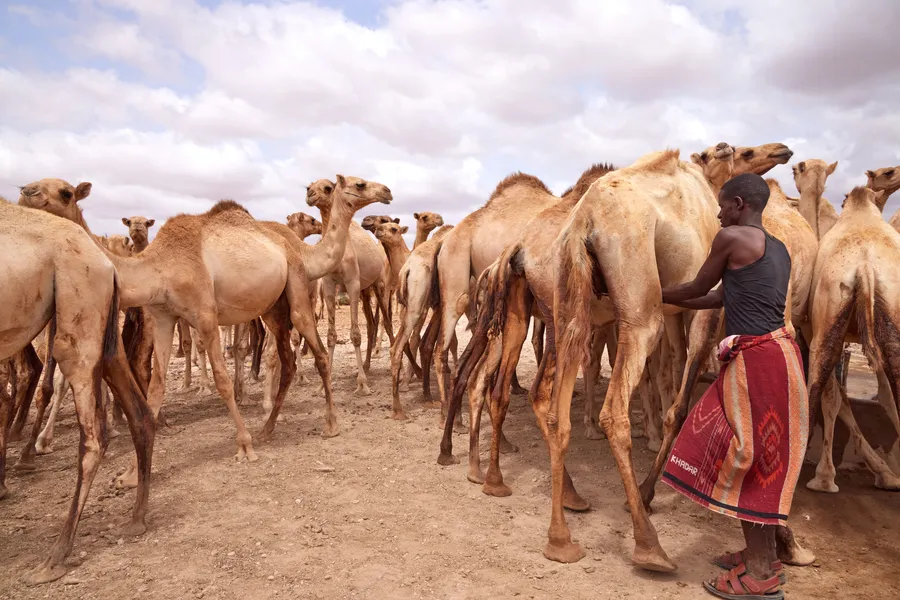
Despite contributing to just 0.08 per cent of global emissions, Somalia is ranked among the most climate vulnerable countries in the world (LSE).
Such vulnerability is not due solely to climate extremes. Somalia has been beset by decades of conflict: there are territorial disputes in the north; clan rivalries persist in southern and central Somalia; and government forces continue to clash with armed groups.
The upshot is that around 2.9 million people are internally displaced, while the constant backdrop of conflict limits the state’s ability to help communities adapt to increasingly frequent disasters and greater climate variability.
“Somalia is a perfect case study of what happens when climate change and conflict combine – the consequences are disastrous,” said Abdallah Togolla, who heads up the ICRC’s economic security programme in Somalia.
“When extreme weather events hit, with greater frequency and greater intensity, they worsen an already dire humanitarian situation.
“We’ve seen how floods and droughts lead to displacement. We’ve also seen how competition over diminishing natural resources can lead to localized violence.
“There’s no doubt that climate vulnerability is inextricably linked to increased inter-communal violence, loss of livelihoods, internal migration, displacement and increased poverty. The question is what to do about it.”
A shifting reality
Adaptation is key. But in countries mired in conflict, where institutions are weak and pre-occupied with insecurity, adaptation is not as easy to instigate.
For Togolla and his team, the recurrent climate extremes have necessitated a change in focus from emergency relief to helping communities adapt to the new and constantly changing reality.
For example, the ICRC has worked with partners to develop maize and sorghum seeds that are more resistant to drought and pests.
These seeds are distributed to nearly 60 agricultural cooperatives across the country, while training has also been provided in agricultural practices.
Households keep 70 per cent of the yield, while the remaining 30 per cent is redistributed to more vulnerable farmers in their area.
To support herders, the ICRC has worked with partners to introduce Napier grass to parts of south central Somalia and northern areas.
The grass can grow in a large range of soils, improves soil fertility, prevents erosion and makes for good fodder for livestock.
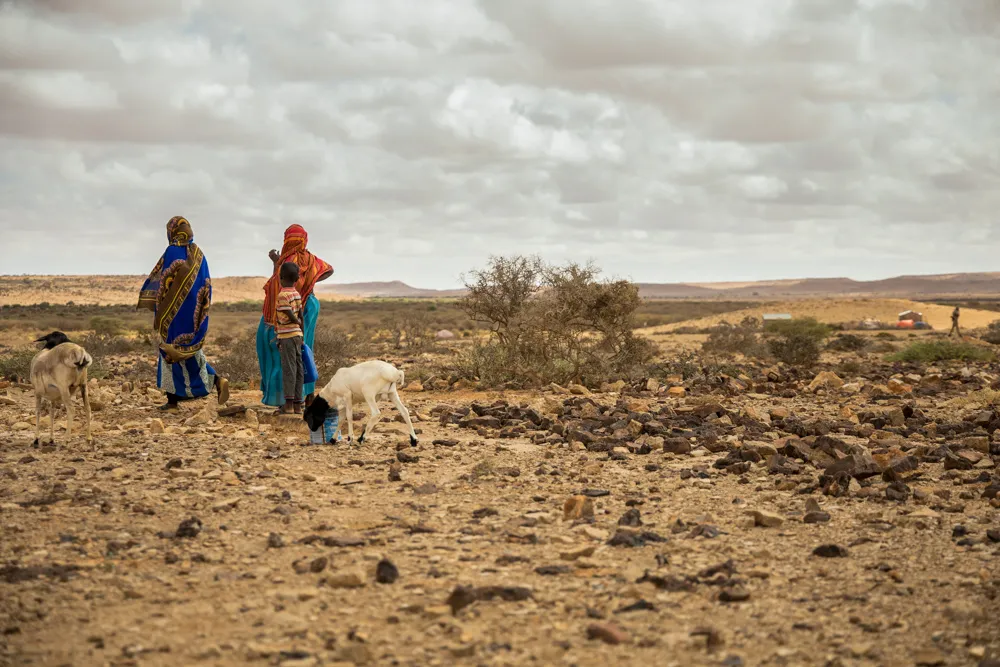
In addition, a veterinary programme has been established across 150 communities in the north. The ICRC has trained community members to provide basic veterinary care to animals.
This network of animal health workers also acts as an early warning system, alerting authorities about any disease outbreaks.
Perhaps the most eye-catching initiative is a bee-keeping project that helps farmers supplement their income through the production of honey.
Working through cooperatives, around 200 farmers have been given modern beehive boxes, tools and protective gear.
Among them is Miris Abdirahman. The 35-year-old, from Bakool, keeps chickens and some livestock.
“The bees help me cover income gaps in my family. Be it food or other things like health,” he said.
Three litres of honey sells in the market for 60 US dollars.
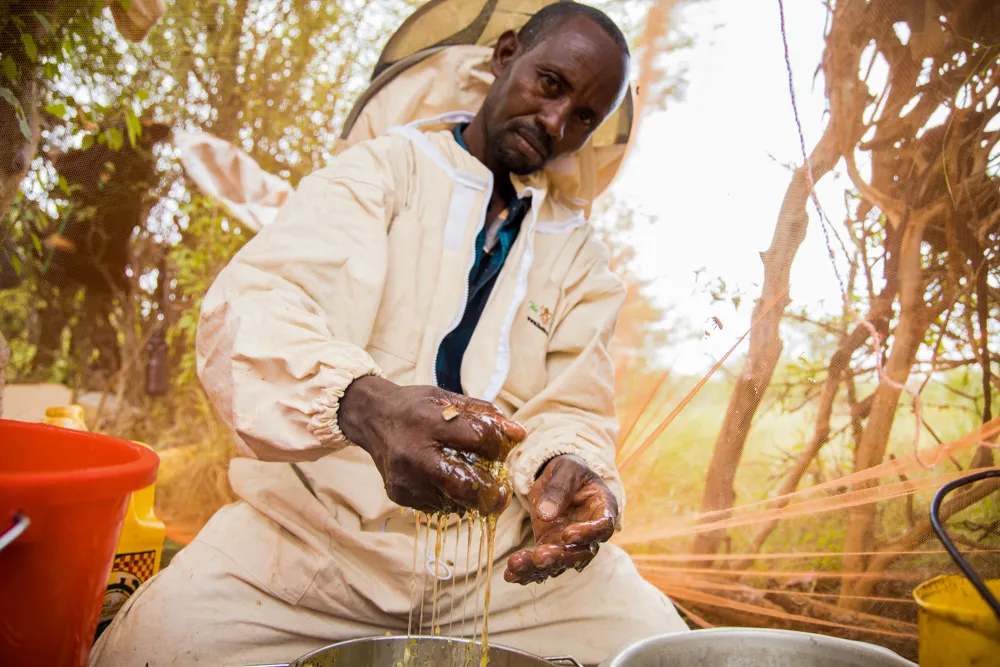
A call for action
The issues facing Somalis are indicative of the growing threat people in conflict zones face from climate extremes.
As world leaders prepare to gather in Glasgow for the climate summit COP26 in November, it’s clear that communities in fragile states must not be overlooked by climate action.
“It’s no surprise that of the countries deemed most vulnerable to climate change, many are mired in conflict,” said Catherine-Lune Grayson, the ICRC’s policy adviser on climate change and conflict.
“The fragility caused by insecurity only serves to amplify the threats posed by climate change and nowhere is this better illustrated than in Somalia.
“At COP26, it’s imperative that that the international community places much greater emphasis on supporting communities to adapt to climate change, alongside mitigation efforts.
“This must be accompanied by a greater share of climate finance for countries touched by conflict.
“There is currently a wide gap between the climate finance provided to stable countries and those affected by conflict. This gap needs to be closed if the most vulnerable are going to get the support they need.”

